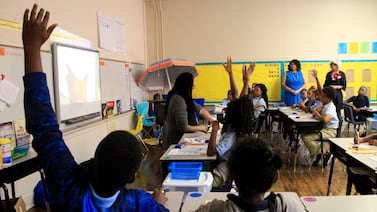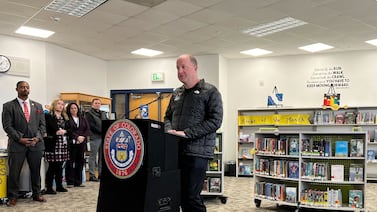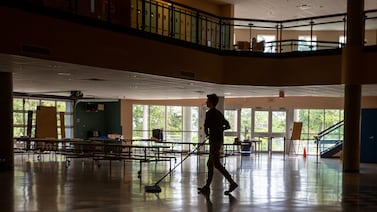Sign up for Chalkbeat Indiana’s free daily newsletter to keep up with Indianapolis Public Schools, Marion County’s township districts, and statewide education news.
Before leading a hike at Eagle Creek Park in Indianapolis, Clare Wildhack-Nolan asked the group of fourth-graders to listen to the birds and insects around them.
Note five colors in the early fall landscape, she urged them, and imagine what it would be like to touch three nearby objects: tree bark, fallen leaves, and mud from the recent rain.
Wildhack-Nolan was not just introducing students to their surroundings but also leading them through a common calming exercise focused on the senses.
The park field trip was hosted by the Peace Learning Center, which for nearly three decades has served thousands of Marion County students and educators. The exercise is one example of the center’s work to introduce students to techniques to recognize and regulate their emotions, treat others with respect and empathy, and work cooperatively.
Such practices have long enjoyed bipartisan support in Indiana. But amid criticism nationally from conservatives who want schools focused solely on academics, Indiana lawmakers this year eliminated a requirement that teachers learn cultural responsiveness, restorative justice, and social-emotional support to manage their classrooms effectively.
The legislation was to go further, but backlash caused lawmakers to retain other training requirements. Still included are requirements that teachers learn to recognize how trauma affects students and help students understand and meet expectations for behavior.
None of the practices targeted in the new law have been banned, however, and the work goes on at places like Peace Learning Center, which works with districts like the MSD of Pike Township, the home district of the students on the hike with Wildhack-Nolan.
“We try to help people see what they need to do to comply, but also, what’s still allowed?” said Peace Learning Center CEO Tim Nation. “We want to help young people learn to manage their emotions so they can sit in classrooms and learn reading and math.”
Good listeners vs. bad listeners
The Peace Learning Center occupies a nearly 100-year-old former estate overlooking a reservoir. Nation and his co-founder found the spot while on a cross-country ski trip through the park in 1997. Back then, the program was an AmeriCorps in-school initiative.

Established in 1999, the center now runs a mix of in-school training for teachers and students and field trips to its Eagle Creek campus. Its Restorative Justice Initiative — which includes staff development, community circles, and peer mediation — has led to decreases in both in-school and out-of-school suspensions at middle and high schools that use the program, according to data from the center.
All fourth and fifth graders at Pike Township have been coming to the center for two years for field trips funded by grants from the Herbert Simon Family Foundation and the Indianapolis Urban League.
The goal at this age is to build communication skills that lead to positive experiences with friends and teachers, which in turn improve attendance and academics. Starting in these grades also gives students a foundation for middle school, when friendships and social skills become more important, facilitators said.
“There’s this element of starting to be a tween, and that’s when a lot of people struggle with friendship issues,” Wildhack-Nolan said.
Back inside the center’s main room, under paintings of Martin Luther King Jr., Mother Teresa, and other peace leaders, facilitator Macy Cansdale told the students to act like bad listeners. So they ignored their partners as they talked — turning away, pretending to sleep, or speaking to others. Their conversation partners said these reactions made them feel awkward and confused.
“It’s like when I told my brother about my day, and he just said, ‘OK, that’s nice,’” one student said.
But when the students switched gears and listened attentively, their conversation partners reported feeling happy and important.
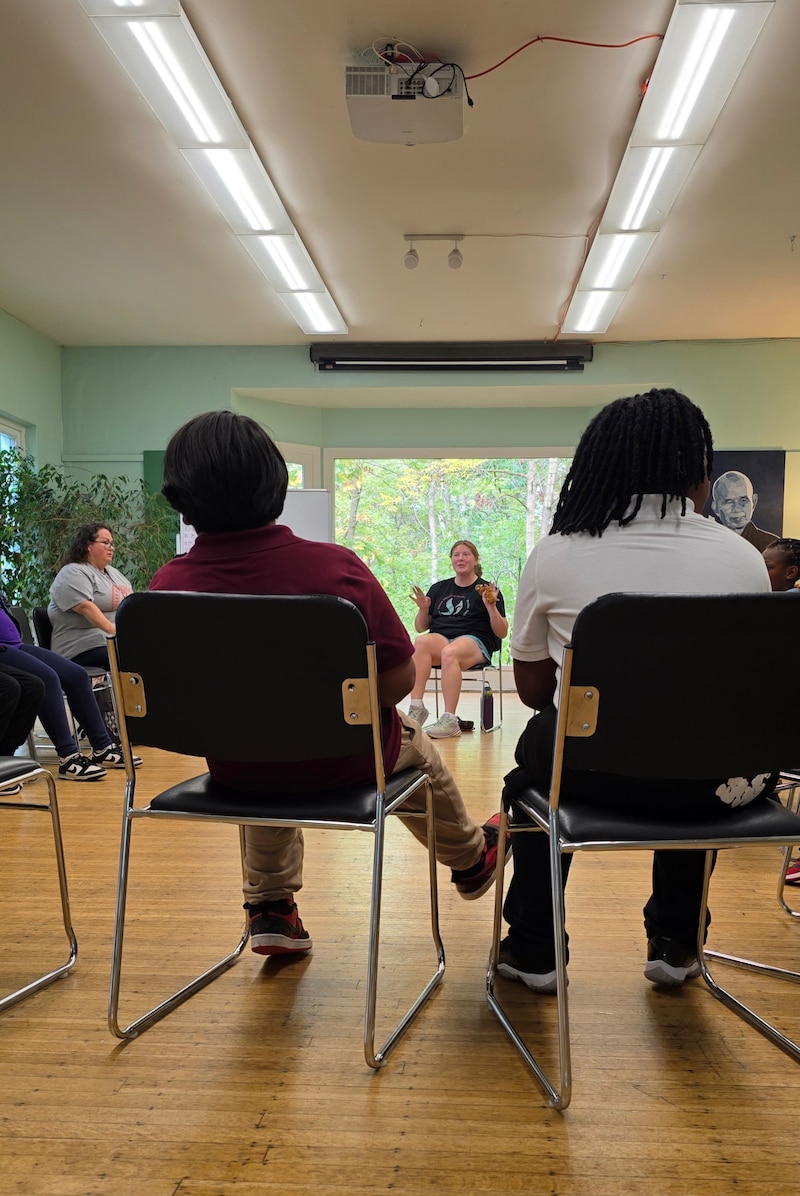
The center has not yet compiled data about how these trips affect Pike students’ behavior when they go back to the classroom, Nation said.
But Gregory Nunley, the district’s director of professional development, said the partnership has played a meaningful role decreasing truancy and the number of students referred to administrators for behavior incidents.
“Our partnership with the Peace Learning Center is an important part of our commitment to supporting the whole child,” Nunley said in a statement. “Through interactive, hands-on experiences like nature hikes, cooperative challenges, and team-building, our 4th and 5th grade students learn how to manage emotions, show empathy, build relationships, and make responsible, caring decisions.”
At the end of the listening exercise, Cansdale asked students to think of a few people in their lives who they could practice actively listening to — like their teacher, Sarah James.
James, who also attended the trip last year, said her students returned from the experience curious about the park and its history, which they study during their Indiana history unit. And the lessons on listening and communication made an impression while students are still at an impressionable age.
“My big hope is that with the good listener, bad listener exercise, that we’ll continue doing that in the classroom,” James said.
It’s important for lessons to extend into the classroom, facilitators said, giving students and teachers a chance to practice the skills they learned at the center.
“Everything we teach at the center is an ongoing process,” Wildhack-Nolan said. “It’s something you have to think about, do in practice, on an ongoing basis.”
With their hike through a forested area near the reservoir underway, Wildhack-Nolan called a halt to find out why students were screaming. Was it the spiders?
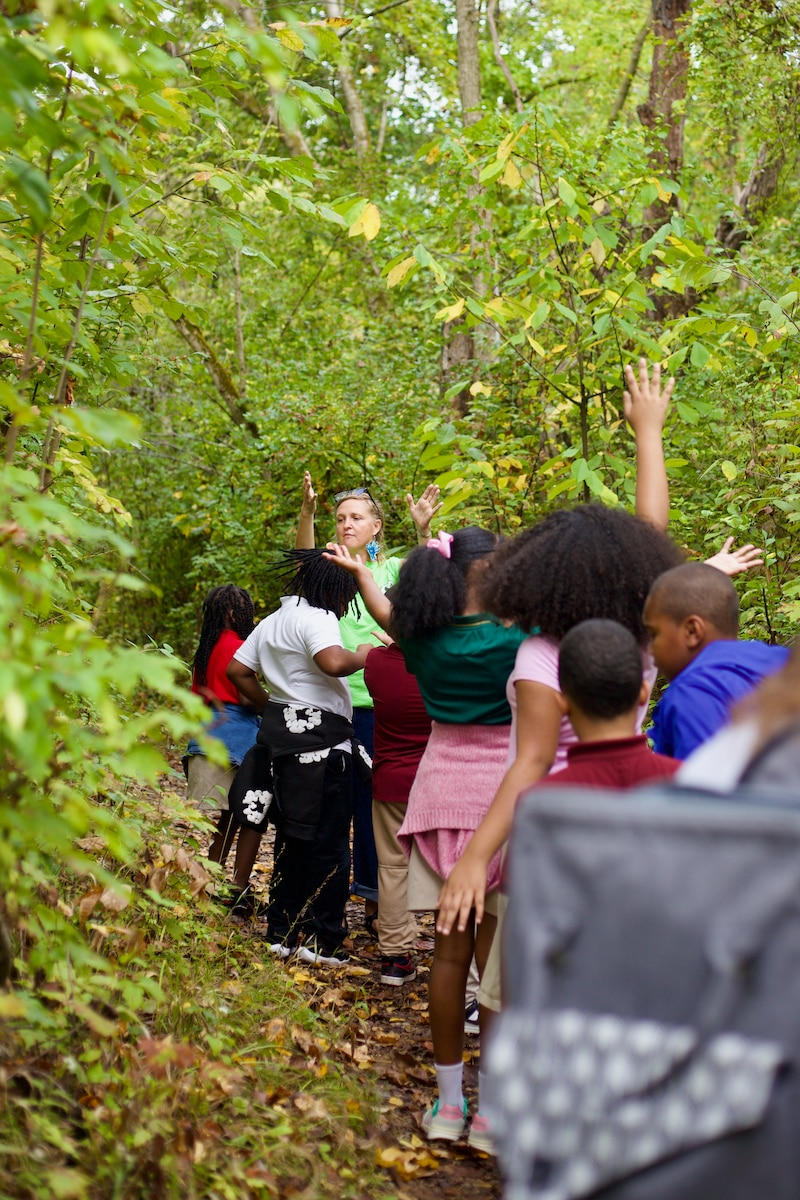
The students were unanimous: “Yes!”
Wildhack-Nolan assured them screaming was a natural reaction but that it could also lead to safety risks, like running and slipping. The spiders became part of an impromptu lesson on how students could control their reactions, even if they couldn’t control something happening around them.
They could not control the spiders.
But they could take a deep breath and keep moving.
Aleksandra Appleton covers Indiana education policy and writes about K-12 schools across the state. Contact her at aappleton@chalkbeat.org.


